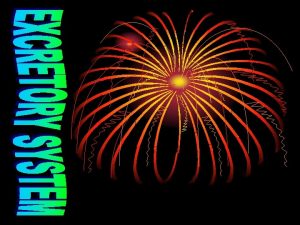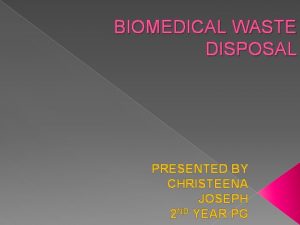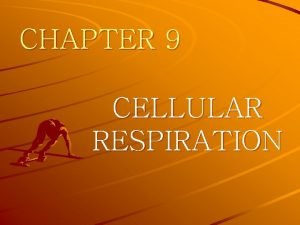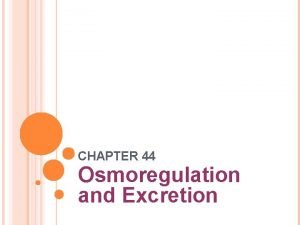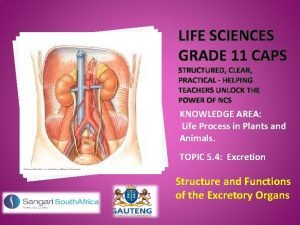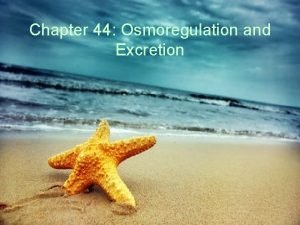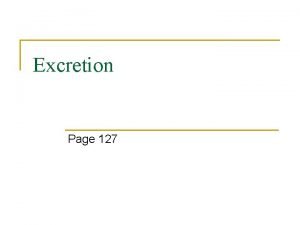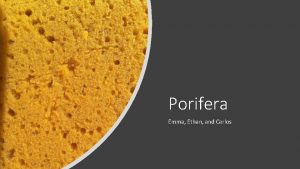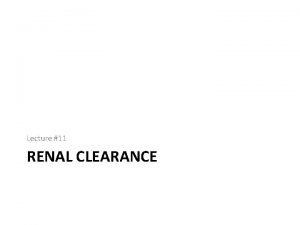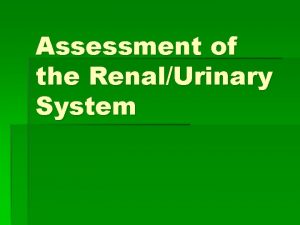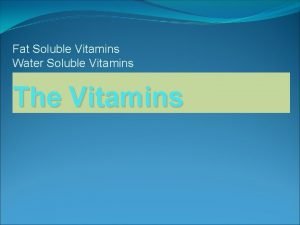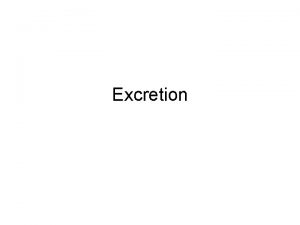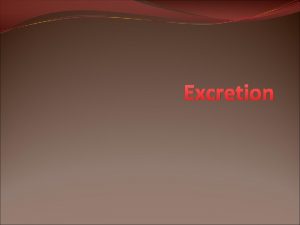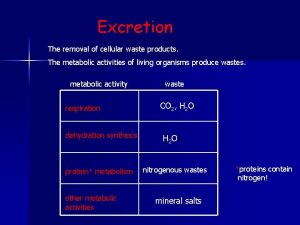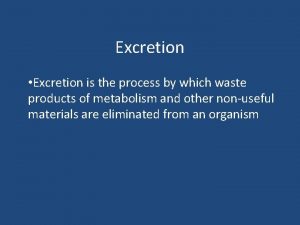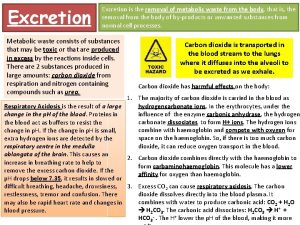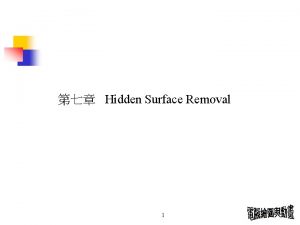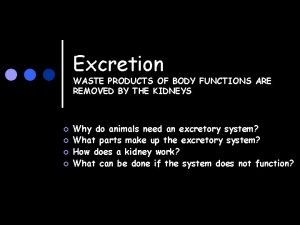Excretion the removal of cellular waste products from

















- Slides: 17


Excretion • the removal of cellular waste products from an organism

Wastes Produced by Metabolism • Respiration: carbon dioxide + water (both cellular respiration and breathing) • Dehydration Synthesis: water • Certain metabolic processes: mineral salts • Protein metabolism: nitrogenous wastes (urea)***

Deamination • Nitrogenous wastes are produced from excess amino acids. . • process of removing the amine group from an amino acid and converting it to another form. • Deamination occurs in the liver in humans.

Major Understanding!!!!! Excretory wastes may be either toxic or nontoxic. When toxic wastes are produced they are normally released, as in animals, or sealed off and stored, as in plants. Nontoxic waste materials may either be retained, released, or recycled in other metabolic activities.

Major Human Excretory Organs • Lungs - organs of gas exchange (inhalation and exhalation) • excrete carbon dioxide and water • Presence of carbon dioxide (CO 2) may be demonstrated by blowing into a solution of limewater (turns milky) or a solution of bromothymol blue (turns yellow)


Liver • deaminates amino acids and converts ammonia to urea because ammonia is very poisonous to the tissues

Skin • has two main layers (dermis and epidermis) -- possesses sweat glands 2 Chief Sweat Gland Functions: • 1. Aid in temperature regulation of the body. • 2. Excretes urine like wastes. (Water – 98%, salt, and some urea – 2%)

Skin cont… • ** Perspiration is only incidentally excretory; its primary function is that of temperature regulation. • Evaporation of the sweat occurs when heat is absorbed from skin cells. • This absorption of heat lowers body temperature. • ** Temperature regulation is an example of homeostasis.

Large Intestine • expels feces and excess salts (may be called the colon)

Kidneys • chief urinary system organ • bean shaped, reddish-brown organs, in the pit of the back 2 Major Functions: • 1. They excrete most of the urea. • 2. They control the concentration of most of the constituents of the body fluids. (the kidney filters out wastes and reabsorbs needed materials like water)


Other Key Excretory Structures: • Ureter: carries urine from the pelvis to the urinary bladder (one from each kidney) • Urinary bladder: short term storage area for the urine • Urethra: conducts urine from the bladder to the outside of the body • Bowman’s Capsules: cuplike structure where water, salt, urea, amino acids, & glucose are filtered into from the

Some Excretory System Disorders: • Kidney Diseases – associated with the malfunctioning of the kidney or the nephron of the kidney. Kidney Failure is VERY serious since without filtration toxic metabolic wastes build up in the body cells. Poor diet, high blood pressure, salt & chemical imbalance, and severe physical stress can bring about kidney failure. • Gout – disease caused by inflammation in


 Where is cellular waste removed
Where is cellular waste removed Hospital waste
Hospital waste Removal of retained products of conception
Removal of retained products of conception Cellular respiration product
Cellular respiration product Pepsi vs coke brands
Pepsi vs coke brands Functional product
Functional product Excretion
Excretion Zero order elimination drugs
Zero order elimination drugs Define pharmacology
Define pharmacology Grade 11 excretion
Grade 11 excretion Osmoregulation
Osmoregulation Qqbreak
Qqbreak Plant hormone
Plant hormone What is excretion
What is excretion Porifera excretion
Porifera excretion Excretion
Excretion Excretion
Excretion Water soluble vitamins
Water soluble vitamins
